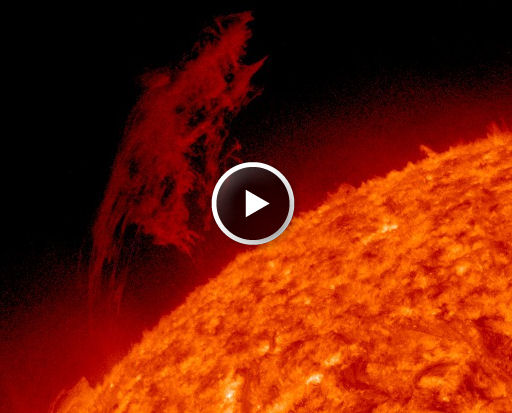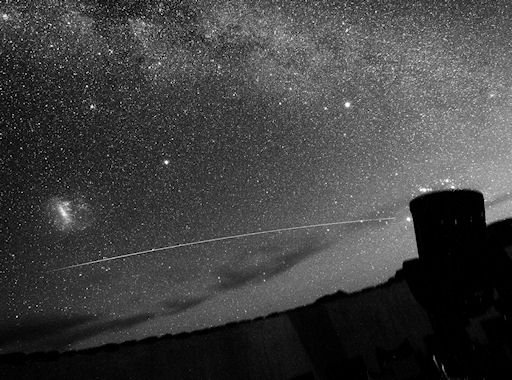Turn your cell phone into a field-tested satellite tracker. Works for Android and iPhone. | | |
QUIET SUN: Solar activity is very low, with no strong flares or geomagnetic storms expected for the next three days.
JUMP: Solar activity may be low, but it's not zero. Just look at what happened on May 20th. An enormous filament of hot plasma and magnetism reared up from the edge of the sun and .... (click on the image)

Credit: NASA/Solar Dynamics Observatory [movie]
...it jumped! The magnificent leap spanned more than 200,000 km of fiery starscape. This is the sort of thing that happens routinely when a 1027ton nuclear explosion (a star) is "quiet." Stay tuned.
more images: from P-M Heden of Vallentuna, Sweden; from Maximilian Teodorescu of Bucharest, Romania; from Christian Viladrich of Jongieux - France; from Robert Arnold of Isle of Skye, Scotland; from Peter Desypris of Athens,Greece; from Fabrizio Barbaglia of Cecima, Italy;
NAMIBIA FLYBY: Last night the International Space Station with shuttle Endeavour docked alongside flew over Namibia--and right by the Large Magellanic Cloud (LMC). Photographer George Tucker recorded the southern hemisphere encounter from Namibia's Sossusvlei Desert Lodge:

"It was a beautiful view in crystal-clear desert skies," says Tucker. "Orion is partially hidden by the telescope and the LMC is the fuzzy object on the left."
This kind of scene is repeating itself around the world. Docked together, Endeavour and ISS are brighter than any star in the sky, and they look beautiful even without the decoration of nearby galaxies. Check the web or your cell phone for local flyby times.
more images: from Oleg Toumilovitch of Blairgowrie, Randburg, South Africa
April 2011 Aurora Gallery
[previous Aprils: 2010, 2009, 2008, 2007, 2006, 2005, 2004, 2003, 2002]
Potentially Hazardous Asteroids (
PHAs) are space rocks larger than approximately 100m that can come closer to Earth than 0.05 AU. None of the known PHAs is on a collision course with our planet, although astronomers are finding
new ones all the time.
On May 22, 2011 there were 1224 potentially hazardous asteroids.
Notes: LD means "Lunar Distance." 1 LD = 384,401 km, the distance between Earth and the Moon. 1 LD also equals 0.00256 AU. MAG is the visual magnitude of the asteroid on the date of closest approach. | | The official U.S. government space weather bureau |
| | The first place to look for information about sundogs, pillars, rainbows and related phenomena. |
| | Researchers call it a "Hubble for the sun." SDO is the most advanced solar observatory ever. |
| | 3D views of the sun from NASA's Solar and Terrestrial Relations Observatory |
| | Realtime and archival images of the Sun from SOHO. |
| | from the NOAA Space Environment Center |
| | the underlying science of space weather |
| | for out-of-this-world printing and graphics |

